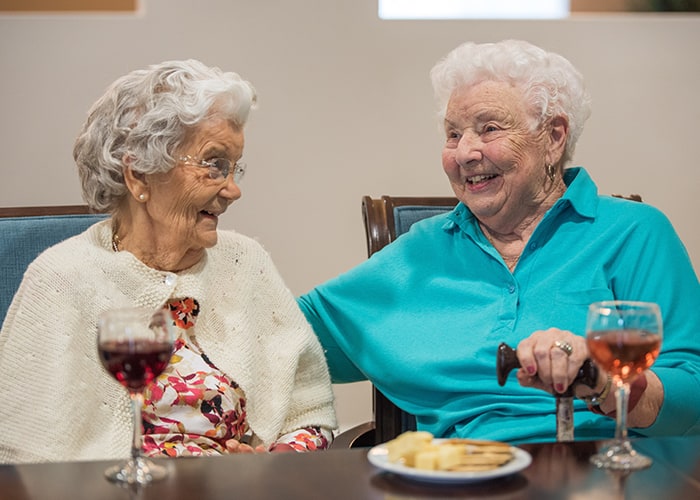Mobility is a cornerstone of independence for seniors, making it vital for staying active and engaged in daily life. Physical changes like joint stiffness, muscle weakness, and reduced balance can complicate movement as we age.
Incorporating mobility exercises into a routine can help combat these changes, supporting flexibility, strength, and overall health.
Staying mobile doesn’t just preserve physical health—in fact, exercising regularly fosters a sense of freedom and emotional well-being that’s essential for aging gracefully. So, what exercises can seniors do?
Why Mobility Matters for Seniors
Mobility isn’t just about getting around—it’s about maintaining independence and quality of life. Being mobile enables a person to carry out everyday tasks like walking to the kitchen, climbing stairs, or bending to tie their shoes.
Losing mobility often leads to reliance on others, which can impact emotional well-being. Research shows that mobility limitations are a key factor in injuries like falls, a leading cause of hospitalization for older adults.
Regular movement also prevents stiffness and keeps joints healthy. Conversely, lack of activity can reduce circulation and limit the body’s range of motion, making even simple tasks difficult. By prioritizing mobility, seniors can maintain their independence, enjoy hobbies, and stay socially active, which are essential for both physical and mental health.

Effective Exercises for Staying Flexible
Incorporating simple, targeted exercises into a daily routine can greatly enhance mobility. These movements are easy to perform and require minimal equipment, making them accessible for all fitness levels. Here are six exercises designed for seniors:
Seated Knee Extensions
Strengthening the quadriceps makes standing and climbing stairs easier. To do this exercise, sit in a sturdy chair, extend one leg straight out, hold briefly, and then lower it. Alternate legs to build lower-body strength and stability. Perform this movement slowly for better control and effectiveness.
Ankle Circles
This exercise keeps ankles flexible, reducing the risk of falls. To start, while seated, lift one foot slightly off the ground and rotate the ankle in circular motions. Repeat with the other foot. Make both clockwise and counterclockwise circles for a full range of motion.
Neck Stretches
Keeping the neck mobile supports head movements necessary for daily activities. To do this stretch, gently tilt your head toward one shoulder, hold the stretch for a few seconds, then switch sides. Avoid forcing the movement to promote a safe and effective stretch.
Seated Spinal Twists
Spinal flexibility is essential for twisting and reaching tasks. To perform this exercise, sit upright in a chair, place one hand on the opposite knee, then gently twist your torso to that side. Hold your position, then repeat on the other side. Keep your back straight for maximum benefit.
Heel-to-Toe Walks
This balance-focused exercise improves stability and coordination. To perform it, stand tall, place one foot directly in front of the other so that the heel of one foot touches the toes of the other, then walk in a straight line for 10 steps. Keep your eyes forward to maintain proper alignment and balance.
Seated Marching
This exercise helps improve hip flexibility and strengthens the legs. To perform it, sit in a sturdy chair with your back straight, lift one knee toward your chest as high as comfortable, and then lower it. Alternate legs in a marching motion. This movement also enhances circulation in the lower body.
Take Care of Yourself
When exercising, take your time with each movement, focusing on steady, gentle motions to keep things safe and comfortable. If something doesn’t feel quite right, it’s okay to pause and try again later. Never do exercises that cause you pain.
Benefits of Regular Mobility Exercises
Regularly doing mobility exercises has both immediate and long-term benefits. One of the most important outcomes is reducing the risk of falls. Stronger muscles and improved balance make it easier to move safely and confidently. Considering that falls are a significant cause of injury among seniors, this is a significant benefit.
Staying mobile also promotes independence. Routine tasks like reaching for objects, putting on shoes, or getting out of bed become simpler, reducing reliance on others. This empowerment is critical for emotional well-being, helping seniors maintain a sense of autonomy.
Beyond physical benefits, mobility exercises have a positive impact on mental health. Physical activity releases endorphins, which enhance mood and reduce stress. Additionally, increased blood flow to the brain supports cognitive function, improving focus, memory, and overall clarity.
For those managing chronic conditions like arthritis or osteoporosis, mobility exercises help alleviate pain and enhance joint function, improving overall quality of life.
Moving Forward with Distinctive Living
Incorporating mobility exercises into daily life is an investment in health and happiness. At Inspired Living, we offer tailored fitness programs designed to help seniors improve their mobility, flexibility, and strength. It’s never too late to start prioritizing your mobility. Whether you’re new to exercise or looking to enhance your routine, these activities can help you move with confidence and ease. Contact Inspired Living today to learn more about how we can support you or your loved one in living a vibrant, active life.


























